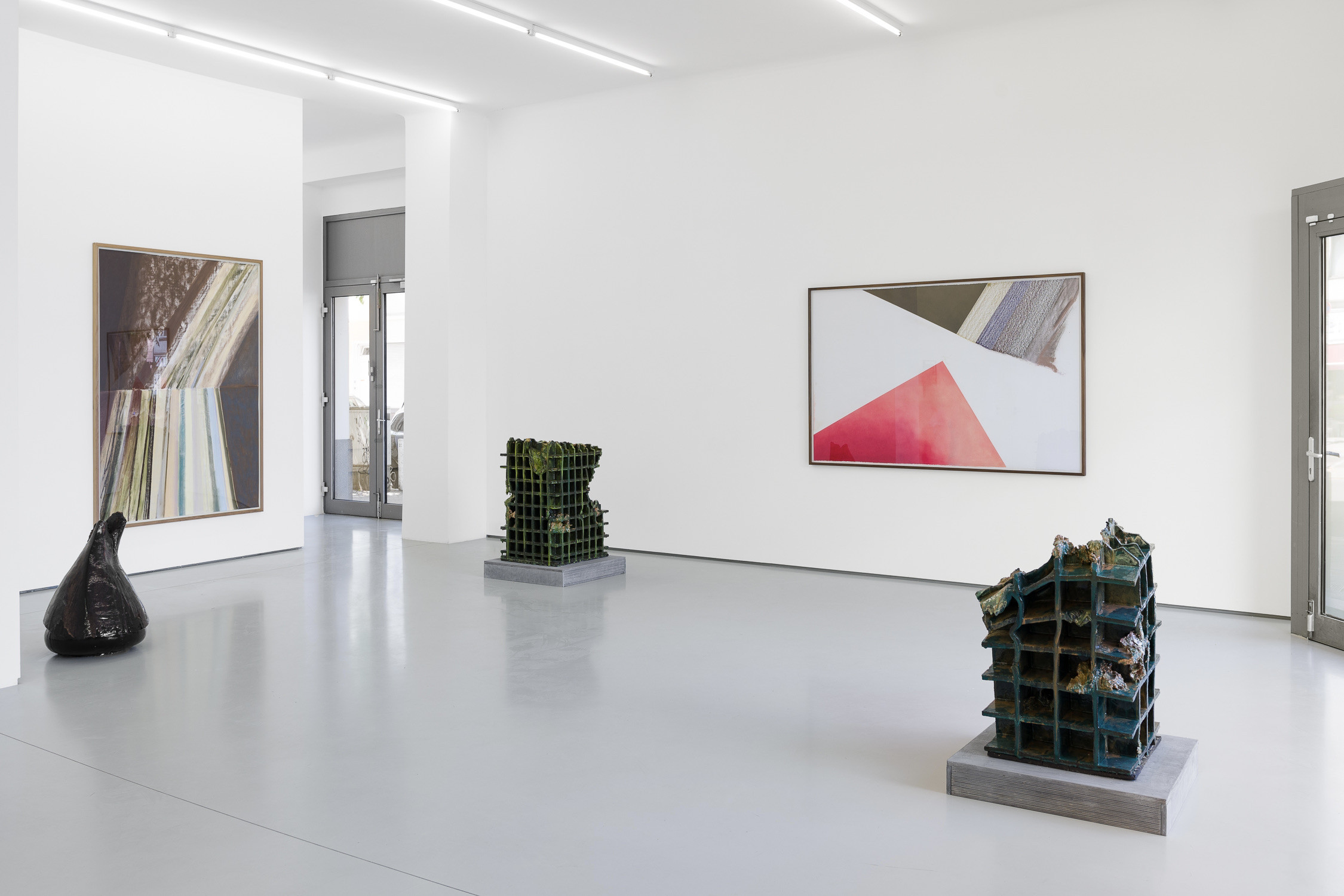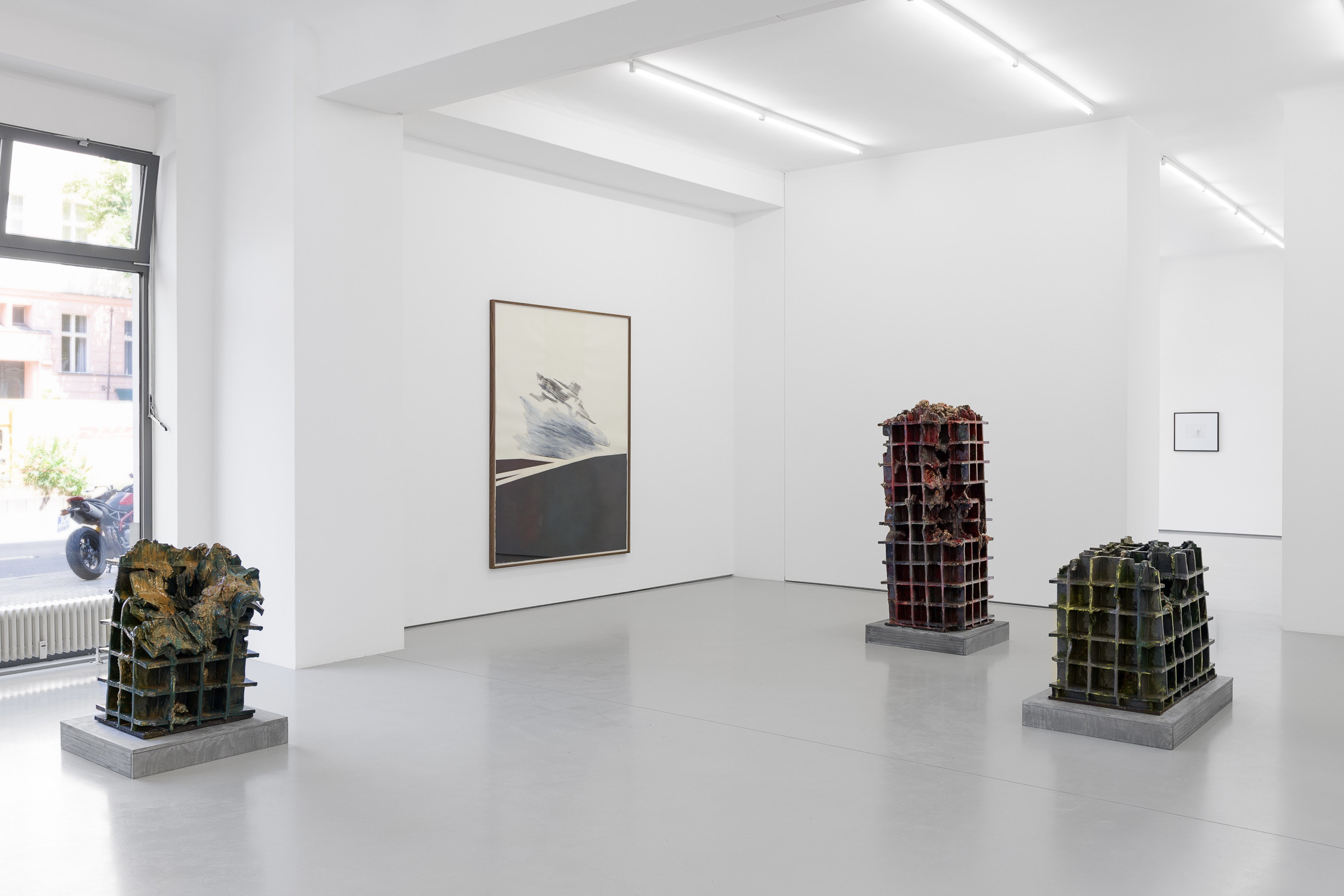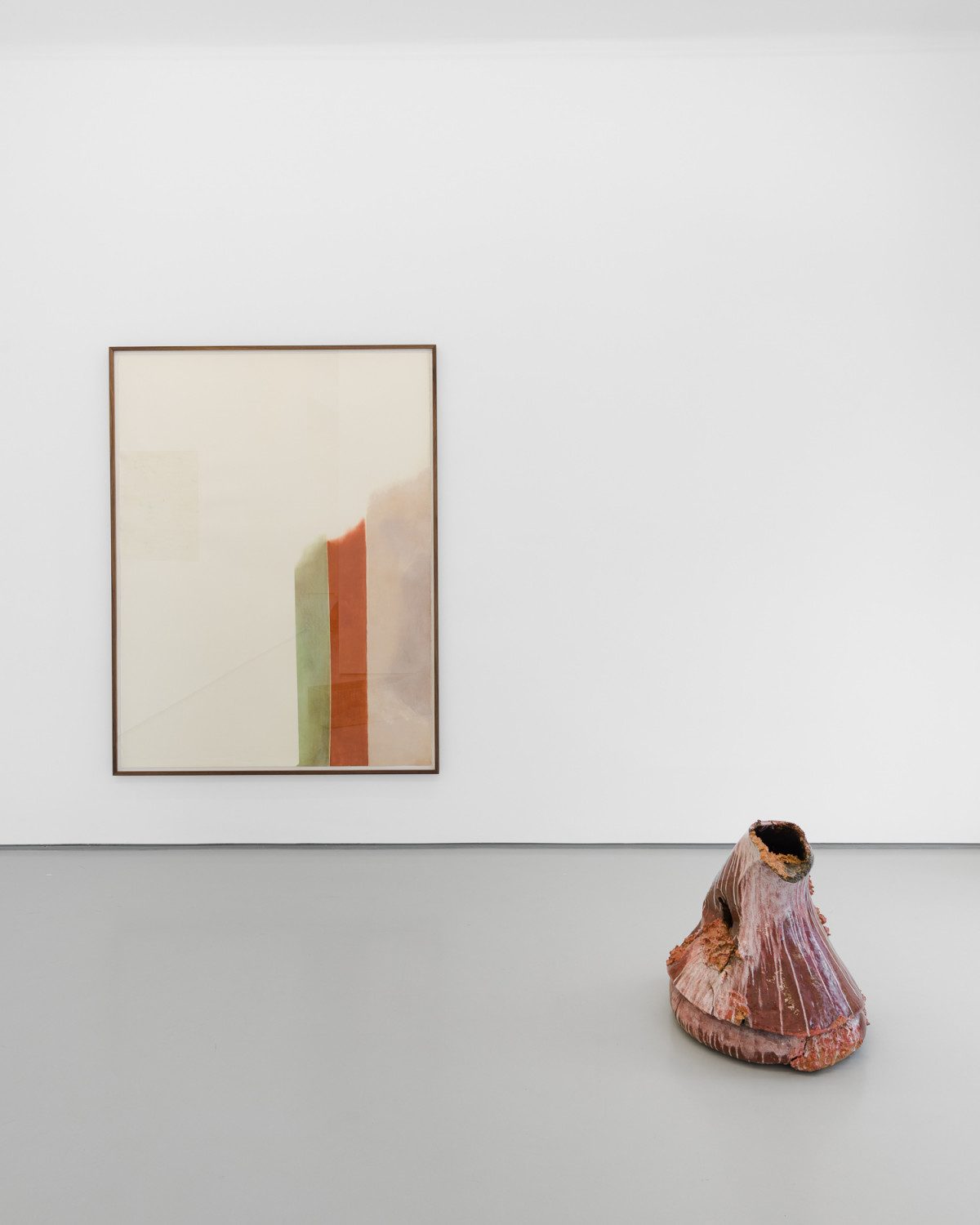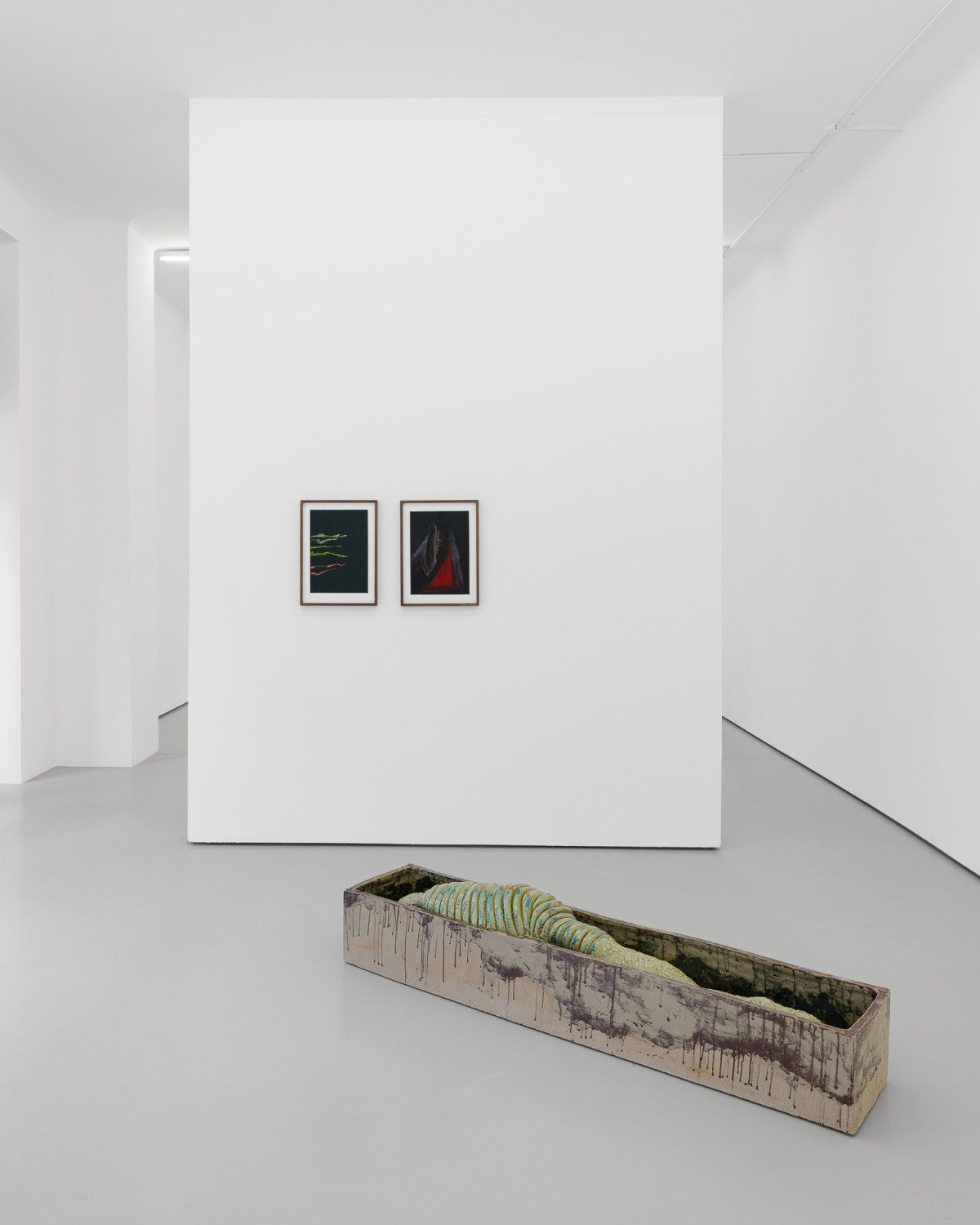





In the exhibition “Where it starts to soak and crumble” alexander levy presents for the first time works on paper by Vicky Uslé (1981, Santander, Spain) in dialogue with sculptures by Gereon Krebber (1973, Oberhausen, Germany). Both artists address the tension between the organic and constructed, between nature and the city on an abstract, fantastic level. However, what Uslé touches upon in a dreamlike way, Krebber shapes into concrete forms.
In recent years, after a residency at the European Ceramic Work Centre (EKWC) in Oisterwijk, the Netherlands, Krebber has concentrated primarily on working with ceramics. The exhibition features new sculptures from his “Agiens” and “Derelikt” series of works, which testify to Krebber’s pleasure in breathing life into his works – in keeping with the classic sculptor myth. While the sculptures usually take on a tragi-comic character through their titles, Krebber uses organic allusions in this case: here, one sees a wide-open maw; there, the shiny glaze runs like saliva over the dark sculpture. The forms that Krebber addresses in these series seem to be related: they can be interpreted as convoluted living units and cocoons. Thus, albeit zombie-like, the second and inanimate skin in which humans and animals grow up sees the light of day. In this sense, the sculptures of the series “Derelikt” (since 2020) appear as gloomy miniatures of ruined buildings. They recall the open skeleton of multi-storey new buildings with their uniform, cubic units. Right angles as the essence of modern buildings come to the fore. The black honeycomb structures further evoke the brutality and rawness of steel beams. Krebber, however, has broken up the perfect, claustrophobic cubes just as insensitively. The viewer witnesses a post-apocalyptic scenario in which the utopias of bygone days have long since become fragile. The steel has melted, and a rain of bombs has fallen on the architectural bodies. Nevertheless, they have survived and are now taking on a life of their own.
Krebber’s “Agiens” also stand on the ground like abandoned cocoons. Again, what has hatched can only be guessed at but recedes into the background, for here too the protective shell becomes the protagonist.
The associative reference to architecture and nature evident in Krebber also determines the abstract works of Vicky Uslé. The artist repeatedly works with the vivid contrast between her residences in the Spanish countryside and the cosmopolitan city of New York. What is evident in a selection of works from recent years is also apparent in Uslé’s latest paintings: impasto to luminous lines and shapes stand out contrasted to the pitch-black background of the images. The organic structures are reminiscent of afterimages on the retina. In part, they resemble abstracted scenes of meditative contemplations of nature, whereby, for example, one can discern algae dancing on the riverbed.
In contrast, the collages Uslé has been making since 2008 are characterised by precise forms and edges. In the centre of the sheet, the artist layers fragments of monochrome paper and, in combining negative and positive shapes and alternating between foreground and background, finally puts the interplay of built and natural environment to the test. The reduced views pick up on familiar things and show how much we share Uslé’s visual experiences: there, the sun shines high at its zenith over the city rooftops; here, a heavy, monumental residential block obstructs the view of the landscape.
Text by Lydia Korndörfer